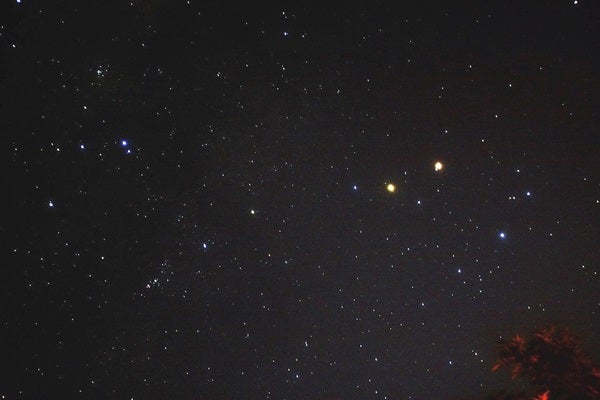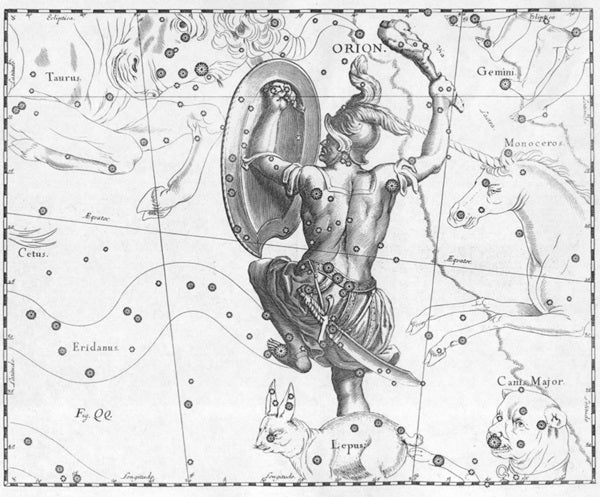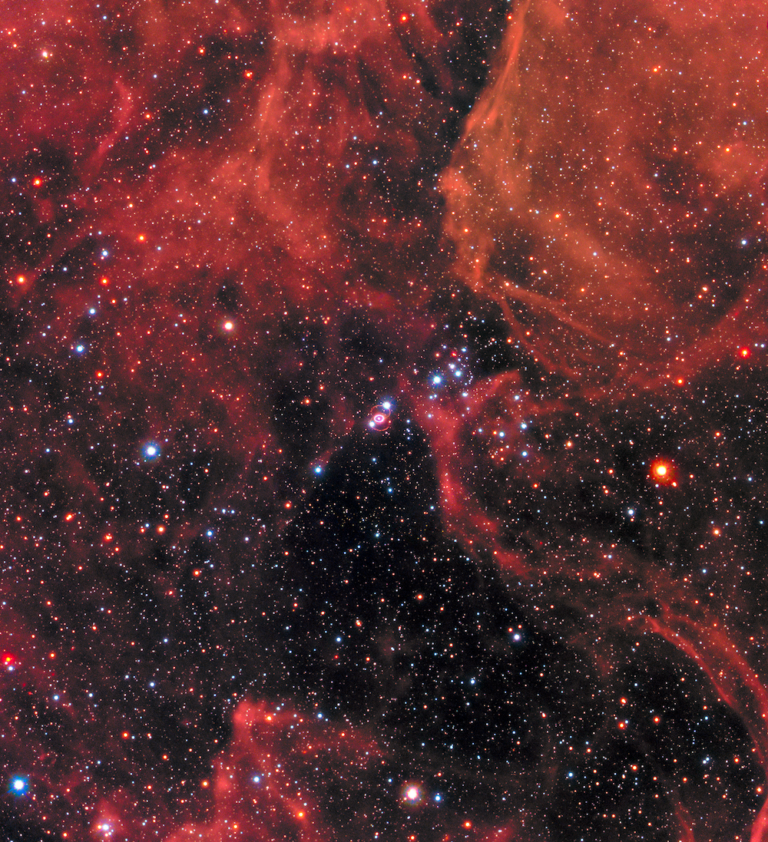I have long wondered why Antares (Alpha [α] Scorpii) gets to be the Rival of Mars — Ares is the Greek name for the Roman god Mars, so Antares (“Anti-Ares”) is essentially named “Anti-Mars.”
But the Red Planet also battles Betelgeuse (Alpha Orionis) and Aldebaran (Alpha Tauri) — both are of similar brightness and color. This month, you can see the fight for yourself as Mars marches off to war against these two titans at nightfall. The three scarlet sentinels all shine around 1st magnitude and are within about 35° of one another. When March opens, they form a line to the southeast. By midmonth, eastward-moving Mars will have bent that line into a shield. Then, by month’s end, the three will morph into a spearhead, with Betelgeuse at the tip.
A chameleon planet
Mars is not always red. When high in the sky near opposition, Mars shines more golden yellow, like Arcturus or Saturn. And during favorable oppositions, the planet can outshine everything but Venus. At these times, Mars could hardly be considered a rival in color to any of the sky’s reddish naked-eye stars.
In ancient times, the Romans gave these two states of Mars separate names. Golden Mars was Silvanus, an agricultural divinity who watched over the fields and guard crops. Red Mars was Gradivus, a warrior marching away from Earth to protect it in battle.
Given Mars’ inconsistent appearance, I wondered if Antares had been singled out to be the planet’s rival for some reason that had nothing to do with its similar color and brightness.
Early origins
So, what has Antares got that the other two reddish stars do not? The answer may be one of heritage and position. Consider the following:
• Ancient Babylonian skywatchers knew the god Mars as Nergal — god of war, pestilence, and death.
• The Greeks equated Nergal with their war god, Ares, whom the Romans later called Mars.
• According to the 1880 work The Cyclopedia of Biblical, Theological, and Ecclesiastical Literature, Nergal may also represent a deified version of Nimrod, the first king of Babylon and, according to the Old Testament, “a mighty hunter before the Lord” (Genesis 10:8).
• In his 1905 book Myths and Marvels of Astronomy, Richard A. Proctor tells us, “The giant Orion has long been identified with Nimrod.”
In that case, the meaning of Antares — or Anti-Ares, aka the Rival of Mars — may instead refer to Antares as the Rival of Orion. We could equally say “Anti-Ares” means “opponent to Mars (aka Orion)” in the sense that the star is opposite Orion in the sky. That Antares, the alpha star of Scorpius, is a rival to both the alpha star of Orion and the planet Mars enhances the notion of these opposing forces.
These conjectures represent a vastly simplified version of the complex mythologies surrounding the origins of these ancient constellations. But further support may come from the myriad myths and legends surrounding the battles between Orion and the Scorpion and why they lie opposite one another in the sky.
One such link dates to ancient Egypt, where Orion represented as the sky god Horus in a boat. Mars, too, was depicted as Horus. In the sky, Horus lies opposite Osiris (the constellation we call Scorpius), the god of death and rebirth. When Horus rises, Osiris sets and slips into the underworld. The cycle represented how, in life, the pharaoh was Horus, while in death he became Osiris.
By the way, it just may be ironic that Orion is the spacecraft NASA plans to carry humans to Mars. As always, send your thoughts to sjomeara31@gmail.com.













